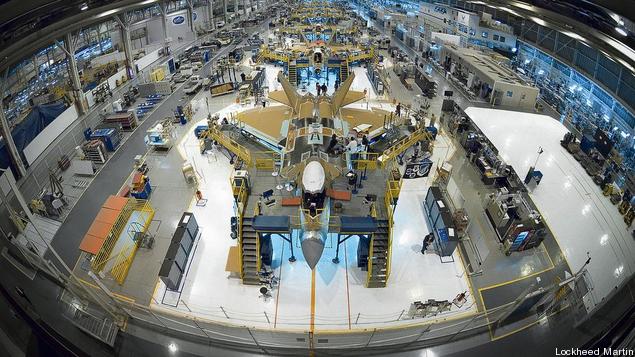
Living with uncertainty in the defense industry
Meteorologists face long odds in accurately predicting the weather, particularly in the Washington area where a botched snow forecast can mean drivers stranded on Chain Bridge Road for 6 hours or thousands of federal workers hunkered down at home against “snowquester” with only a dusting on the lawn.
One thing meteorologists are familiar with is uncertainty. Today, so are those inside the Beltway as they come to grips with the true impact of billions of dollars in across-the-board spending cuts that begin to take effect this week.
Within the defense industry, contractors are on guard. Pentagon planners are too, careful of eroding the defense industrial base.
The Pentagon’s top weapons buyer wrote to industry executives this week that spending on research and development and testing and evaluation will need to be cut by $18 billion this year. This kind of funding, referred to as the investment account, is a mainstay of the defense industry’s business model.
This is just the beginning of a cycle in the industry where companies and Pentagon planners are going to have to learn to live with uncertainty.
This newfound vulnerability, which contrasts with rising budgets and robust political support during the past decade, can produce paralysis. That would be a mistake to give in.
The defense budget can be cut responsibly, but sequester is not the right way to do it. A strategic approach to funding the military is needed now more than ever, even if it is increasingly difficult to take this long-term approach given the near-term political fights.
The industry still has to move forward, and so does the country. The defense industrial base is an important component of America’s competitiveness and our allies and our rivals are not pausing while we figure out our future. Supporting the defense industrial base will require creative measures, as well as discarding ways of doing business that don’t make economic or political sense anymore. Many tough decisions were put off during the past decade and now it is time to make them with the long-term interests of the country in mind.
Sequester will weaken American national security through further diminishing America’s competitive position and imprecise cutbacks to military programs. Whether the most pessimistic forecasts of such damage come true will depend on whether the industry and the Pentagon can learn to live with uncertain forecasts.
Check out ASP’s White Paper on American Competitiveness:
Read our Blogs and Listen to our other podcasts in the series:
Podcasts:
Adm. William Fallon (Ret.) on sequestration and American Competitiveness
Sequestration – what’s happening in the States
American Competitiveness and National Security – Podcast
Blog Posts:
Harvard Business School survey finds more pessimism about U.S. competitiveness
Competitiveness – Education: What most schools don’t teach
Sequestration – damage to American competitiveness
Energy R&D Critical to American Competitiveness







[…] Read more on the American Security Project’s Flashpoint blog. […]
[…] Living with uncertainty in the defense industry […]
[…] Living with uncertainty in the defense industry […]
[…] Living with uncertainty in the defense industry […]
[…] Living with uncertainty in the defense industry […]
I think we can learn from the families and soldiers on their third and fourth deployment a bit about learning to live with uncertainty.
[…] Living with uncertainty in the defense industry […]